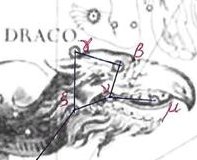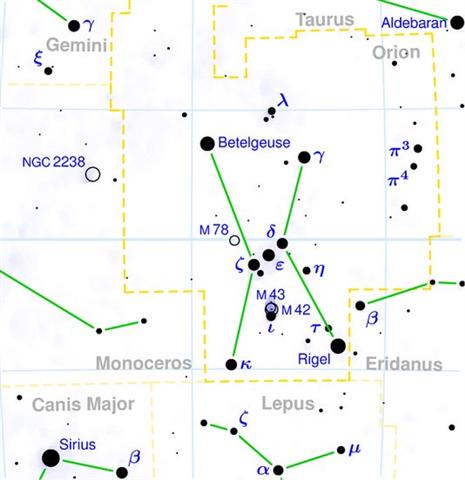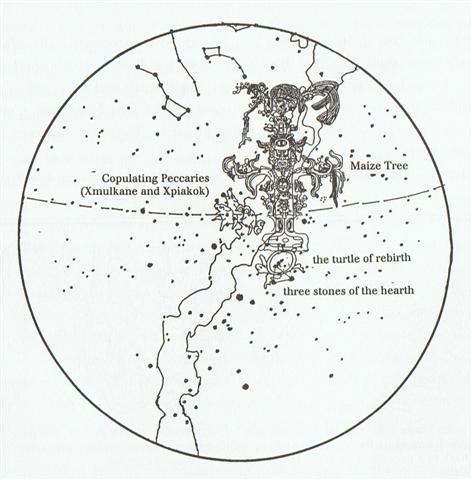Once again. I have suggested the introduction of the new month names July (for Quintilis) and August (for Sextilis) in Roman times coincided with, or followed, a realignment between the stars in the night sky and the days in the calendar. The Julian calendar had 62 days in July + August and at some point December 31 could have changed status from a 'night zero' - outside the regular calendar and not to be counted - to the last day in a year measuring 365 (instead of 364) days. The months September (7), October (8), and December (10) could therefore have been pushed ahead with 61 days in the year as compared to the fixed stars, catching up with them because they had moved ahead by the precession. And the dates in Manuscript E could refer to an earlier arrangement with 10 months, in which case we would have to 'translate' its month names to that of a modern calendar with 12 months, for instance as follows:
... At the beginning of 44 B.C. - when Ceasar was still alive - the Senate decided to raise statues of him in all the temples and to sacrifice to him on his birthday in the month Quintilis, which in honour of him was renamed July. He was raised to the status of a god (among the other gods of the state) under the name Jupiter Julius. Marcus Antonius, who this year was consul together with Ceasar, became high priest and responsible for the ceremonies. In the middle of February, at the time of the old feast of Lupercalia, he ran around naked and whipped the Roman ladies with thongs made from goat-skin, in order to promote their fertility ... ... Februa, also Februatio, was the Roman festival of ritual purification, later incorporated into Lupercalia. The festival, which is basically one of Spring washing or cleaning (associated also with the raininess of this time of year), is old and possibly of Sabine origin. According to Ovid, Februare as a Latin word which refers to means of purification (particularly with washing or water) derives from an earlier Etruscan word referring to purging. The Roman month Februarius ('of Februa', whence the English February) is named for the Februa/Februatio festival, which occurred on the 13th to 15th days of this Roman month. A later Roman god Februus personified both the month and also purification, and is named for them. Thus, the month is named for the festival and not for the god ... ... The ordinary year in the previous Roman calendar consisted of 12 months, for a total of 355 days. In addition, a 27-day intercalary month, the Mensis Intercalaris, was sometimes inserted between February and March. This intercalary month was formed by inserting 22 days after the first 23 or 24 days of February; the last five days of February, which counted down toward the start of March, became the last five days of Intercalaris. The net effect was to add 22 or 23 days to the year, forming an intercalary year of 377 or 378 days ... It is possible to go back from rongorongo times when the Jaw of the Dragon (ξ Draconis) rose with the Sun in December 16 (350) to the time of the Bull when the fixed stars would have risen 64 days earlier in the year and when the extrapolated date would have been OCTOBER 13 (286 = 350 - 64). However, we can guess the year at that ancient time could have had only 10 months and I have therefore introduced the notation "AUGUST 13 (225 = 286 - 61). For dates at the time of Bharani (the place of birth) - which was 41 precessional days earlier than the time of rongorongo - my month names have a bis (") sign in front, for instance "November 5 (309 = 350 - 41), i.e. according to the structure in our modern Gregorian calendar with 12 months. In order to go from "November 5 (309) back to the time of the Bull it would then be necessary to adjust both for the precessional difference 64 - 41 = 23 days and to eliminate the effects of the change from a year with 10 months to a year with 12 months: "November 5 (309) - 23 = 286 (OCTOBER 13), and then 286 (OCTOBER 13) - 61 = 225 ("AUGUST 13) = 80 + Ruti 5 (*229):
Which means that at the time of the Bull (when the dates should have been in parallel with the stars) the date Ruti 5 could have referred to the time in the year when Betelgeuze was at the Full Moon and the Sun at the Jaw of the Dragon (Grumium, ξ Draconis):
The time of Bharani could have been the assumed 'place of birth' for our Sun calendar, because at that time Antares would have risen with the Sun in "October 15 (288) and the 'birth' of the Gregorian calendar in AD 1582 had definitely occurred in °October 15 (288). ... The Julian calendar day Thursday, 4 October 1582 was followed by the first day of the Gregorian calendar, Friday, 15 October 1582 (the cycle of weekdays was not affected) ...
The dates for some of the significant events of the Explorers (planets):
... Later on in this series of rituals, the Chorti go through a ceremony they call raising the sky. This ritual takes place at midnight on the twenty-fifth of April and continues each night until the rains arrive. In this ceremony two diviners and their wives sit on benches so that they occupy the corner positions of the cosmic square. They take their seats in the same order as the stones were placed, with the men on the eastern side and the women on the west. The ritual actions of sitting down and lifting upward are done with great precision and care, because they are directly related to the actions done by the gods at Creation. The people represent the gods of the four corners and the clouds that cover the earth. As they rise from their seats, they metaphorically lift the sky. If their lifting motion is uneven, the rains will be irregular and harmful ...
|
||||||||||||||||||||||||||||||||||||||||||||||||||||||||||||||||||||||||||||||||||||||||||||||||||||||||||||||||||||||||||||||||||||||||||||||||||||||||||||||||||||||||||||||||||||||||||||||||||||||||||||||||||||||||||||||||||||||||||||||||||||||||||||||||||||||||||||||||||||||||||||||||||||||||||||||||||||||||||||||||||||||||||||||||||||||||||||||||||||||||||||||||||||||













